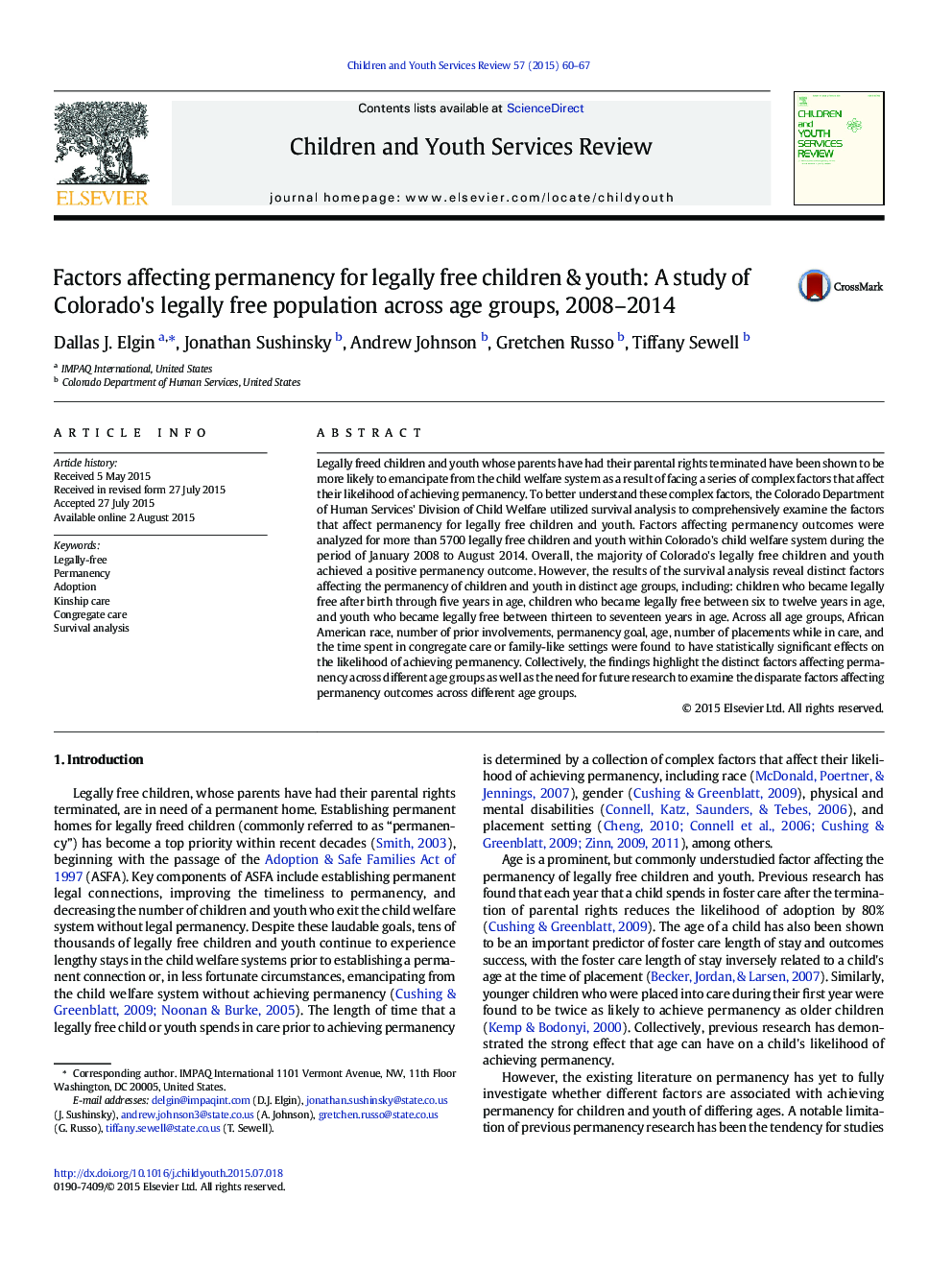| Article ID | Journal | Published Year | Pages | File Type |
|---|---|---|---|---|
| 6833926 | Children and Youth Services Review | 2015 | 8 Pages |
Abstract
Legally freed children and youth whose parents have had their parental rights terminated have been shown to be more likely to emancipate from the child welfare system as a result of facing a series of complex factors that affect their likelihood of achieving permanency. To better understand these complex factors, the Colorado Department of Human Services' Division of Child Welfare utilized survival analysis to comprehensively examine the factors that affect permanency for legally free children and youth. Factors affecting permanency outcomes were analyzed for more than 5700 legally free children and youth within Colorado's child welfare system during the period of January 2008 to August 2014. Overall, the majority of Colorado's legally free children and youth achieved a positive permanency outcome. However, the results of the survival analysis reveal distinct factors affecting the permanency of children and youth in distinct age groups, including: children who became legally free after birth through five years in age, children who became legally free between six to twelve years in age, and youth who became legally free between thirteen to seventeen years in age. Across all age groups, African American race, number of prior involvements, permanency goal, age, number of placements while in care, and the time spent in congregate care or family-like settings were found to have statistically significant effects on the likelihood of achieving permanency. Collectively, the findings highlight the distinct factors affecting permanency across different age groups as well as the need for future research to examine the disparate factors affecting permanency outcomes across different age groups.
Related Topics
Health Sciences
Medicine and Dentistry
Perinatology, Pediatrics and Child Health
Authors
Dallas J. Elgin, Jonathan Sushinsky, Andrew Johnson, Gretchen Russo, Tiffany Sewell,
